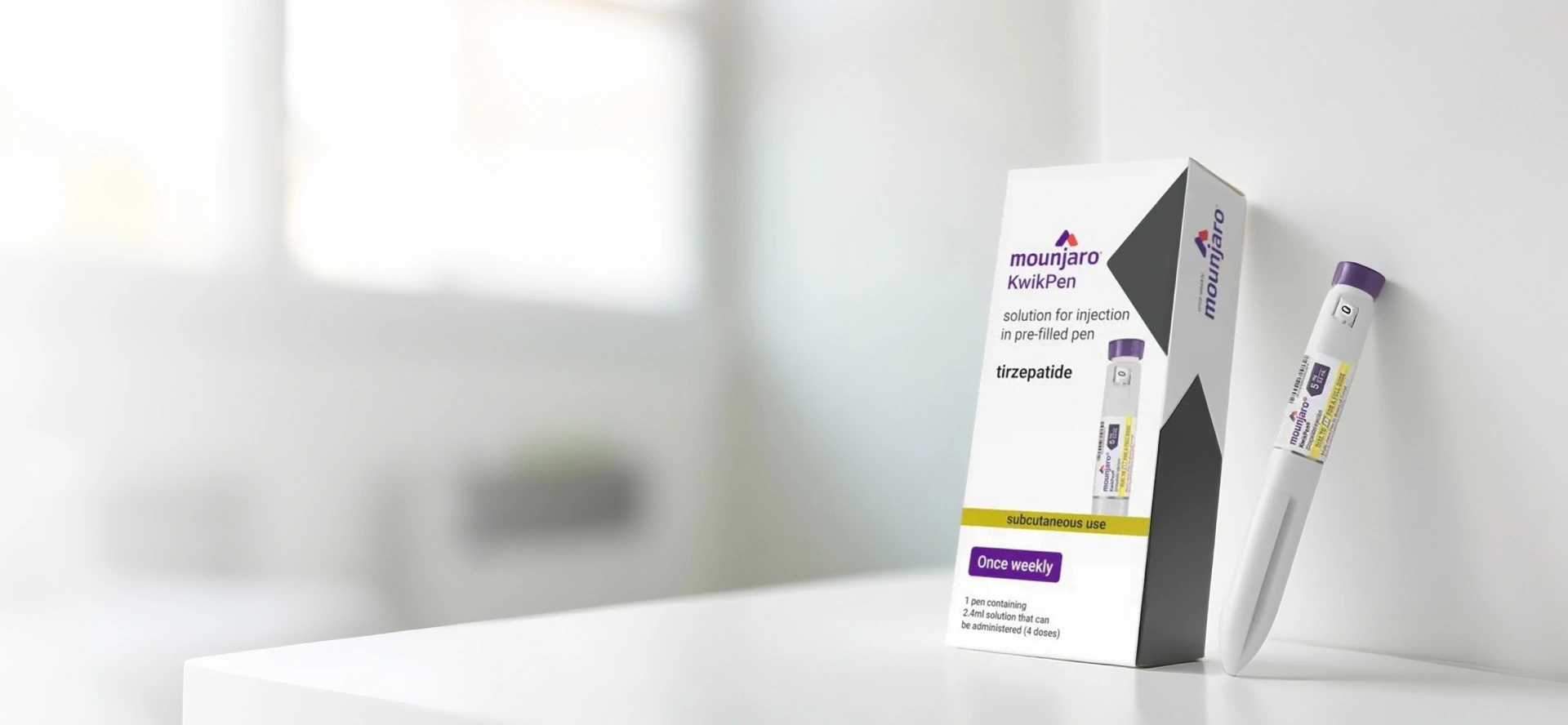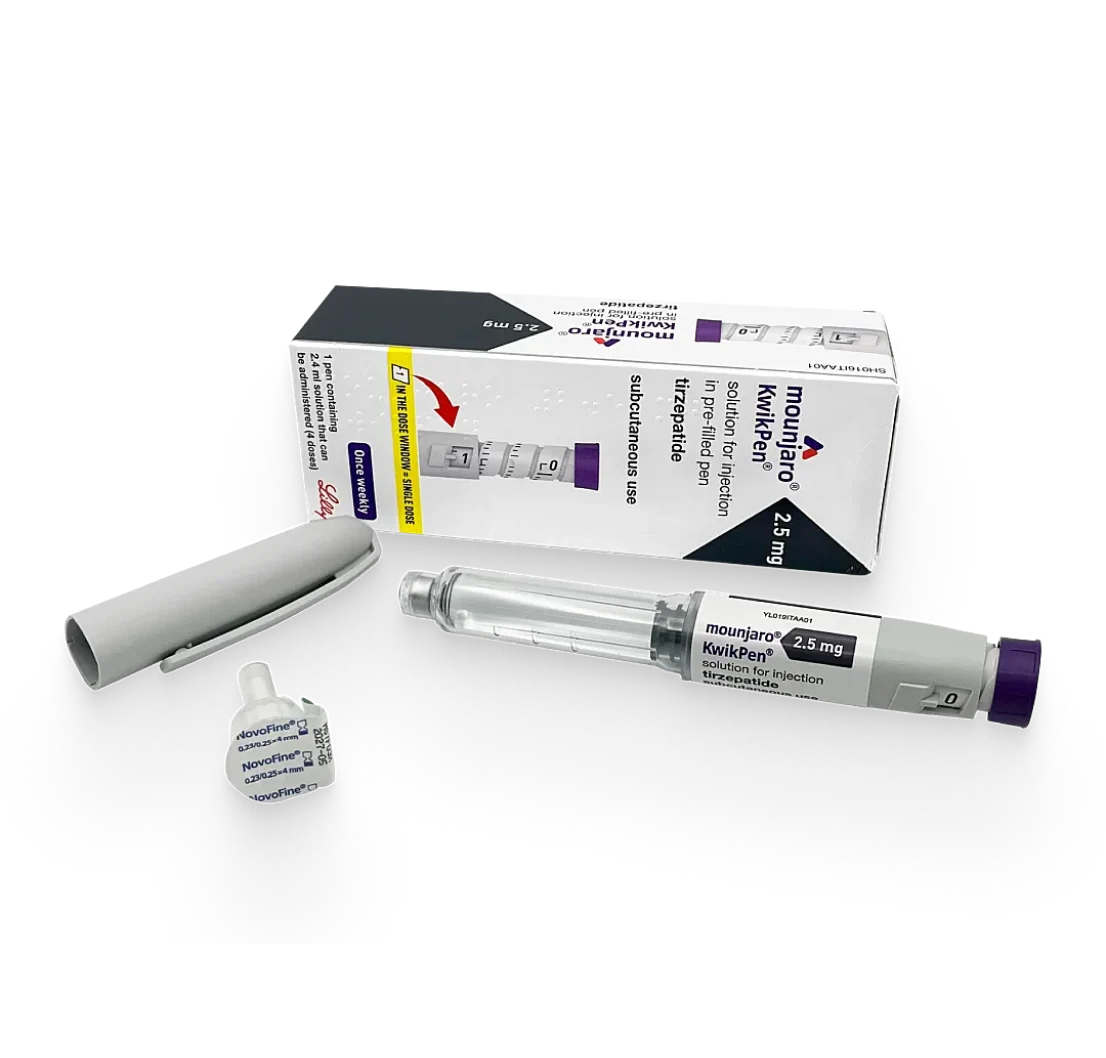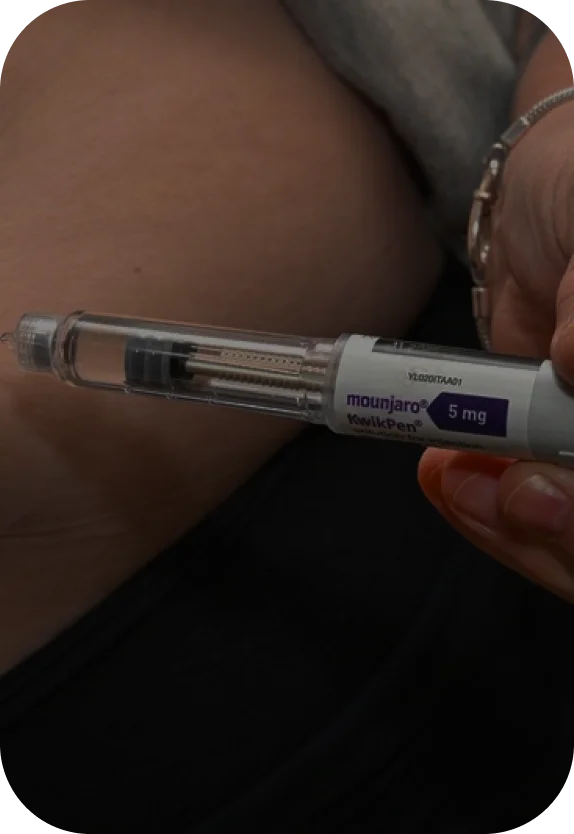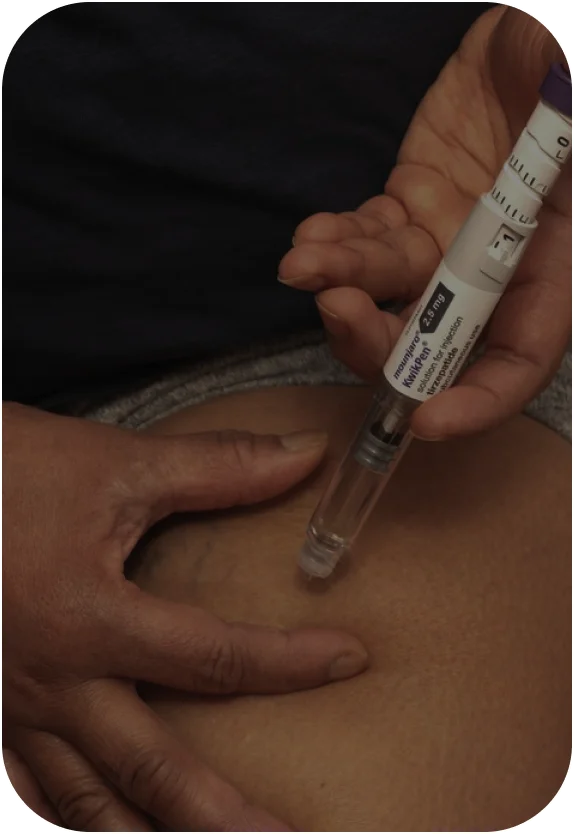Mounjaro®
Complete Weight Loss Drug Overview


What is Mounjaro®?
Mounjaro® (Tirzepatide) is an innovative injectable medication developed by Eli Lilly and Company in the United States, originally designed to treat type 2 diabetes and now approved for weight management as well. It works by activating two gut hormone receptors: GLP-1 and GIP, helping regulate blood sugar, lower HbA1c levels, and promote significant weight loss. Approved by the U.S. FDA in 2022, Mounjaro® was officially launched in Taiwan in 2025, becoming a new option for diabetes treatment and weight reduction as recognized by the Taiwan Ministry of Health and Welfare.
Is Mounjaro Effective for Weight Loss?
How It Works
The active ingredient in Mounjaro® — Tirzepatide — is the world's first medication that targets both GLP-1 and GIP receptors. This dual-incretin mechanism helps reduce appetite and boost metabolism more effectively, marking a major advancement in diabetes and weight management therapies.
GLP-1:
Regulates Blood Sugar & Appetite
GLP-1 (Glucagon-like peptide-1) stimulates insulin secretion to help lower blood sugar. It also suppresses appetite and slows gastric emptying, leading to a longer feeling of fullness and reduced calorie intake. In addition, it decreases glucagon release to prevent post-meal sugar spikes and supports cardiovascular health.
GLP-1 (Glucagon-like peptide-1) stimulates insulin secretion to help lower blood sugar. It also suppresses appetite and slows gastric emptying, leading to a longer feeling of fullness and reduced calorie intake. In addition, it decreases glucagon release to prevent post-meal sugar spikes and supports cardiovascular health.
GIP:
Enhances Insulin Sensitivity
GIP (Glucose-dependent insulinotropic polypeptide) is a unique aspect of Mounjaro. It further enhances insulin sensitivity, helping the body utilize blood sugar more effectively. It also promotes fat metabolism, reduces fat storage, and improves vascular and bone health. Additionally, GIP helps protect the gastrointestinal tract and stimulates beta-cell proliferation for more stable blood sugar control.
GIP (Glucose-dependent insulinotropic polypeptide) is a unique aspect of Mounjaro. It further enhances insulin sensitivity, helping the body utilize blood sugar more effectively. It also promotes fat metabolism, reduces fat storage, and improves vascular and bone health. Additionally, GIP helps protect the gastrointestinal tract and stimulates beta-cell proliferation for more stable blood sugar control.
Mounjaro®
Usage Instructions & Steps
Check the Medication
Confirm the expiration date and do not use expired medication.
Prepare the Pen
Remove the cap, attach the needle, and prime the pen until you hear a “click” and see a solid line in the window.
Set the Dose
Turn the dial to the dosage prescribed by your doctor.
Disinfect the Injection Site
Wash your hands and use an alcohol swab to clean the skin where you plan to inject (abdomen, thigh, or upper arm).
Administer the Injection
Insert the needle straight into the skin, press the injection button, and hold until the dose window shows “0” to ensure the injection is complete.
Aftercare & Disposal
Remove and discard the needle after each use to prevent reuse. Do not rub the injection site afterward, as this may affect absorption.
Note: Each pen contains 4 pre-set doses. Only one injection is needed per week.
Mounjaro®
Dosage Recommendations
(Taiwan Guidelines)
Dosage adjustments must be made by a physician based on individual tolerance and response, to minimize side effects while ensuring effective blood sugar control and weight management.
Mounjaro® Injection Sites
Mounjaro® is administered via subcutaneous injection. Rotate among the three main areas below to avoid injecting into the same spot repeatedly and reduce local discomfort:

Abdomen
Use an area at least 2.5–5 cm away from the navel. This is the most common site, with even fat distribution for reliable absorption.

Outer Thigh
Choose an area with thicker subcutaneous fat. Alternate between left and right thighs to reduce local irritation.

Back of Upper Arm
Typically used when assisted by another person; not recommended for self-injection.
Important Notes
-
Rotate injection sites; avoid repeatedly using the same area.
-
Avoid areas that are red, swollen, bruised, scarred, or inflamed.
-

Clean the skin with an alcohol swab before injection to maintain hygiene.
How Much Does Mounjaro® Cost?
Where to Buy?
Self-Pay for Weight Management
When used for weight management, Mounjaro® is a self-pay treatment and is not covered by National Health Insurance. Coverage may apply only under specific type 2 diabetes treatment criteria. Out-of-pocket pricing varies by dose—the higher the dose, the higher the cost. In general, Mounjaro is around NT$15,000–18,000 per pen. One pen lasts four weeks (one injection per week), averaging NT$3,750–4,500 per week.
Price Ranges by Dose
- Mounjaro 2.5mg/5mg: approximately NT$15,000 per pen (each pen lasts 4 weeks; once-weekly injection)
- Mounjaro 7.5mg/10mg: approximately NT$18,000 per pen (each pen lasts 4 weeks; once-weekly injection)
💡 Tip: Actual pricing varies by clinic, region, and dosage. Confirm your fees with your clinic before starting treatment.
Prescription from a Licensed Clinic
The safest, legal approach is to obtain Mounjaro through a licensed aesthetic or weight-management clinic, where a qualified physician evaluates you, prescribes, and arranges injections to ensure safety and efficacy. Online resellers or social platforms may advertise low prices but pose risks of counterfeit products and legal issues—avoid them. Most retail pharmacies currently do not dispense directly. Book a consultation at a professional clinic to protect your health and results.

Book a Weight Management Consultation at NAISS CLINIC
to Evaluate Whether Mounjaro Is Right for You
If you’re considering Mounjaro, schedule a consultation at NAISS CLINIC. Our physicians will assess your weight status, metabolic markers, and lifestyle, then tailor a personalized plan and medication strategy to your needs.
Who Can Use Mounjaro®?
Who Should Avoid It?
Suitable Candidates
-
People with Obesity
- Severe obesity (BMI ≥ 30) or moderate obesity (BMI ≥ 27).
- With at least one weight-related comorbidity, such as hypertension, hyperlipidemia, cardiovascular disease, prediabetes, type 2 diabetes, or obstructive sleep apnea.
-
Diabetic Patients
For those with prediabetes or type 2 diabetes, Mounjaro can help regulate blood glucose levels.
-
People at Risk of Hypoglycemia
Mounjaro may help stabilize blood sugar for those concerned about hypoglycemia from insulin use.

Not Recommended For
-
Pregnant or Breastfeeding Women
Not recommended due to potential safety concerns.
-
Allergy to Tirzepatide or Excipients
Do not use if allergic to Tirzepatide or any ingredients in the formulation.
-
Moderate to Severe GI Disorders
Avoid use if you have gastrointestinal diseases such as ulcers or bowel obstruction, as the medication delays gastric emptying.
-
Severe Liver or Kidney Impairment
Because metabolism is closely related to liver and kidney function, medical evaluation is needed before use.
-
Family History of Certain Cancers
Such as medullary thyroid carcinoma (MTC) or multiple endocrine neoplasia syndrome type 2 (MEN2). Use is contraindicated.
-
Acute Illness or Specific Complications
Avoid use in cases of acute pancreatitis, acute kidney injury, gastroenteritis, or diabetic retinopathy.
Possible Side Effects of Mounjaro®
What to Know Before Use
Similar to other incretin-based medications, Mounjaro® may cause side effects, with gastrointestinal symptoms being the most common. These are generally mild to moderate and improve over time, especially within the first 4–6 weeks. Starting at a low dose and gradually increasing may help reduce discomfort.
Mounjaro® shares similar side effects with other GLP-1-based
therapies, most commonly involving
gastrointestinal discomfort. These are
typically
mild to moderate and subside over time,
especially during the initial 4–6 weeks of treatment. Starting
at a lower dose and gradually increasing can effectively
minimize side effect risks.
Common Side Effects & Incidence Rates:
-
 Reduced Appetite
Reduced Appetite15%–22%
-
 Nausea
Nausea13%–18%
-
 Diarrhea
Diarrhea13%–17%
-
 Indigestion (Bloating or Discomfort)
Indigestion (Bloating or Discomfort)6%–9%
-
 Constipation
Constipation6%–9%
-
 Vomiting
Vomiting6%–8%
-
 Abdominal Pain / Discomfort
Abdominal Pain / Discomfort5%–8%
-
 Redness or Itching
Redness or Itching5%–8%

Reminder
If side effects persist or interfere with your daily life, consult your doctor promptly. Your physician may adjust the dosage or treatment approach accordingly.
Complete Comparison of 6 Weight Loss Pens
Frequently Asked Questions About
Mounjaro®
If you maintain a balanced diet and regular exercise routine, the results can be long-lasting. However, returning to high-calorie eating habits or a sedentary lifestyle after stopping treatment may increase the risk of weight regain.
If you miss a dose, it’s recommended to take it within 4 days. If more than 7 days have passed, consult your doctor to re-evaluate and adjust your injection schedule and dosage.
A full course typically lasts at least 3–6 months, and is adjusted by your doctor based on weight loss progress, metabolic data, and side effect response.
Before opening, store in the refrigerator at 2–8°C (36–46°F). For travel, it can be kept at room temperature below 30°C (86°F) for up to 21 days. After opening, return to the fridge and use within 30 days. Avoid repeated refrigeration or high heat exposure.
According to clinical studies, participants typically observe noticeable weight loss between weeks 8 and 12 of treatment. However, the timeline may vary depending on your body type, diet, and activity level.





